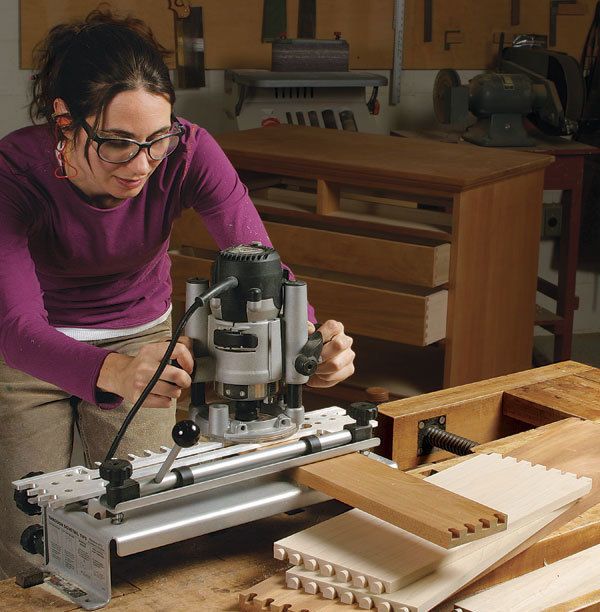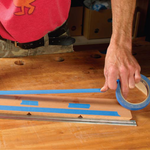Dovetail Jigs
How to create a complex joint the easy way
Synopsis: Router dovetail jigs can help you cut strong and attractive dovetails with speed and ease. While the initial set up is often fussy, it takes very little time to cut a lot of perfectly fit dovetails, more than compensating for the setup time. A chest of drawers, a run of box parts, or drawers for an entire kitchen are ideal applications for one of these jigs. In this article, assistant editor Anissa Kapsales shares what need to know to set up this router jig and start cutting.
I’ve been known to spend hours laboring over hand-cut dovetails. First, I fret over the layout, drawing half-pins at each end of the row and creating an attractive layout between. Once I’m satisfied, I move on to sawing and paring the pins, laying out the tails as precisely as I can, then more sawing and paring to sneak up on a good fit.
I enjoy the challenges and the satisfaction of cutting dovetails by hand. So when I decided to learn how to cut dovetails with a jig that guides a router, I began with a definite bias against any shortcut. By the time I’d finished my first drawer, I could appreciate the advantages that dovetail jigs offer.
A jig’s greatest assets are speed and ease of cutting. After you go through a fussy initial setup, it takes very little time to cut a lot of perfectly fit dovetails, more than compensating for the setup time. A chest of drawers, a run of box parts, or drawers for an entire kitchen are ideal applications for one of these jigs. Once you dial everything in, you could easily cut all the joints you need in a couple of hours.
There’s a learning curve with dovetail jigs, and every jig seems to have its own set of quirks. But in my experience, a careful trip through the instruction manual and a manageable period of trial and error are all it takes to successfully cut tight-fitting, attractive joints.
If you’re a beginning woodworker and haven’t mastered the hand-cut dovetail, a jig can allow you to use an extremely strong, attractive joint that you might otherwise have to leave out of your repertoire.
How they work
Dovetail jigs use one or more templates that resemble the spread-out fingers on a hand; guiding a router into the spaces between the fingers creates pins or tails, depending on how the workpiece is clamped into the jig. There are separate templates for half¬blind dovetails and through-dovetails. For half¬blinds, both boards are cut at the same time; for through¬dovetails, the tails are cut first. Some jigs are designed to cut only half¬blinds, but I think it makes sense to invest in one that also can cut through¬dovetails.
From Power Tool Basics 2007
For the full article, download the PDF below:
Fine Woodworking Recommended Products

Estwing Dead-Blow Mallet

Olfa Knife

3M Blue Tape






















Log in or create an account to post a comment.
Sign up Log in